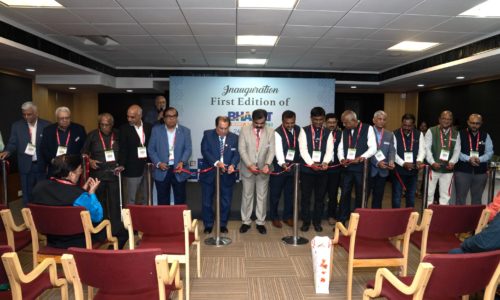 Looks count and first impressions matter. How products are judged by their many differing attributes – not least fitness for purpose, consistent reliability and value for money – will determine the extent to which they build market share on an ongoing basis. Prior to that, however, it will probably be a particular spot colour, a distinctive font, or else the artful application of a metallic ink on the exterior of the pack that initiates the relationship between a brand and a consumer. Des King discusses the brand new perspectives in packaging.
Looks count and first impressions matter. How products are judged by their many differing attributes – not least fitness for purpose, consistent reliability and value for money – will determine the extent to which they build market share on an ongoing basis. Prior to that, however, it will probably be a particular spot colour, a distinctive font, or else the artful application of a metallic ink on the exterior of the pack that initiates the relationship between a brand and a consumer. Des King discusses the brand new perspectives in packaging.
Thanks to impressive print packaging, brands can seduce customers into a change of purchasing vote at the point of purchase, says Superbrands founder Marcel Knobil. “We would end up with less brand and more bland were it not for the attention that the packaging attracts.” Superbrands is acclaimed worldwide as being an independent authority and arbiter of branding excellence, committed to paying tribute to exceptional brands and promoting the discipline of branding. The impact of a winning combination of text and graphics extends way beyond fronting up that initial beauty parade. As well as being the ‘eye candy’ that hooks the consumer in the first instance, a perfectly reproduced external image provides consumers with an often subliminal product recognition and reassurance that can be the brand owner’s banker in a congested retail space. Today’s packaging trends are driven by longer supermarket opening hours, continually enhanced print technologies and capabilities and demand to protect brands and increase recognition. Not only surviving but attaining the status as the preferred choice under such highly testing conditions is one half of the brand owner’s greatest challenge. The other is to meet it at an affordable cost.
Controlling quality
With the high probability of colour variations occurring not only between different substrates, but also print processes – and indeed from one printer to another, not only in different locations but even when they are running presses made by the same manufacturer – maintaining consistency can be a complex undertaking. The best way to meet it is to ensure that all the contributory links within the supply chain which are engaged in steering the progress of a printed pack from hatch to despatch are all able to interact via an open entry web-based platform.
“Our vision is to connect the supply chain from the brand owner to the retailer and to make that flow broader and richer,” says JefStoffels, Esko marketing director.“We do this by adding greater functionality which meets the go-to-market and quality needs of CPG (consumer packaged goods) businesses and retailers. We also make it possible for the brand owner to ensure that the flow of data is secure and transparent, mistakes and errors can be picked up early or avoided altogether and the net result is to get products to market faster.” Similarly web-based colour management systems can extend the same degree of comfort and control to brand owners over how pre-determined colour parameters are then replicated accurately irrespective of substrate or supplier, ensuring a guaranteed consistency of colour reproduction that underpins brand authenticity and integrity. The X-Rite PantoneLIVEcolour management solution is ideal for the brand owner as it has control over the pre-determined colour parameters, these are then stored in the cloud for use as and when required by his supply chain. This ensures accurate replications of the accredited brand image irrespective of substrate or supplier.
Pressed to perform
Converters equipped with smarter production facilities can be more directly instrumental in achieving cost and performance benefits to brand owners. Using high-definition flexo plate and software technologies, it is now possible to meet the requirements of 85 percent of current flexo-printed, flexible packaging without detriment to the finished result from CMYK + white rather than using special inks.
It’s not just improvement at the front-end that is raising quality and performance standards in flexo, still the sector’s most widely used print process accounting for over 40 percent of a current global printed packaging market worth around an estimated €250 bn per annum, particularly for flexibles and corrugated board applications. Speed on the press and consistency across substrates are key.
Digital mindset
What has sparked these improvements in analogue press technology is the increasingly potent challenge posed by digital print; not least in meeting brand owner requirements for cost-efficient shorter run lengths – and thereby, lower inventory levels – and the ability to differentiate products on-shelf through customisation. Whilst affordably utilising variable data has always been part and parcel of the digital print proposition, it’s now clearly on the retail marketing radar following its successful adoption by highprofile retail marketing campaigns run by Coca Cola, Heineken, Nutella and a steadily growing band of global blue-chip brands.
The finishing touch
Customisation is not the only route to catching the consumer’s eye on-shelf. Short-run, cost-effective special effects such as high gloss, glitter, metallic without recourse to hot-foil stamping and even Braille are also within the remit of next-generation digital post – press enhancement technology now establishig itself within the finishing sector. Also providing a more cost-effective means of achieving greater stand-out is the take-up of cold foiling using the analogue process – notably as an alternative to laminated / metallised substrates for labels and cartons. Meanwhile, at the higher end of the scale is the arresting 3D effect achieved through the use of Fresnel lens technology providing instant ‘stand-out’ in retail duty-free for cartons containing the global gin brand Bombay Sapphire.
The new frontier
Quite a number of applications on the market bring into play mobile technology. For example, on-pack augmented reality (AR) applications pioneered by Blippar that allow users to simply look at an object through the camera on their smartphone to activate an instantaneous digital search and draw down information from the web. In a recent campaign for Perrier, the invitation to consumers to shake their phone like a cocktail shaker to reveal a recipe was a typically innovative way to highlight the overall concept and add fun by using the technology to unique advantage.
Underpinning product security and thereby underpinning brand integrity is another obvious avenue being explored by smart technologies. A fully printed near-field communication sensor tag (NFC) developed by Thin Film Electronics for Diageo’s Johnnie Walker whisky doubles as a security and anti-counterfeiting device as well as interacting with smartphones to dispense product advice and information. As a lot of the labelling and pre-printed information currently required to be displayed on-pack is gradually phased out, just imagine the potential for branding afforded by that freed-up real estate.
Brands are currently getting maybe only 40 percent of the pack’s surface for its primary purpose. However, if one small interactive barcode resolves all the regulatory and legal requirements 90 percent of the print surface could be released for marketing the product.
Eye-catching and innovative printed packaging is a shrewd investment towards building a loyal and enduring customer-base, concludes Des King. Whilst consumers are exercising greater versatility than ever before in choosing how and where they are able to gather information through which to determine product preferences, packaging offers the brand owner a uniquely guaranteed opportunity to control how they communicate with prospective customers face to face in-store at the very point of purchase.



